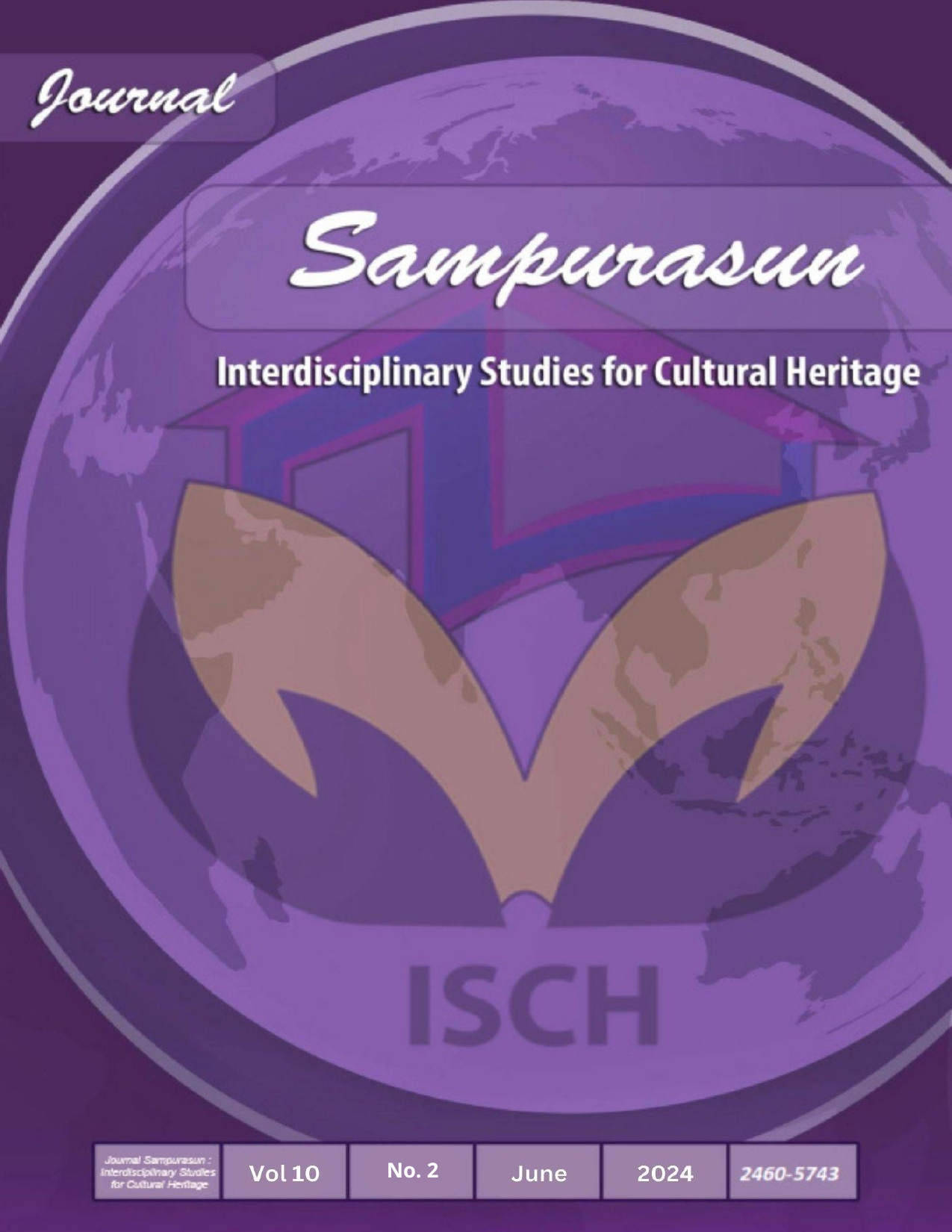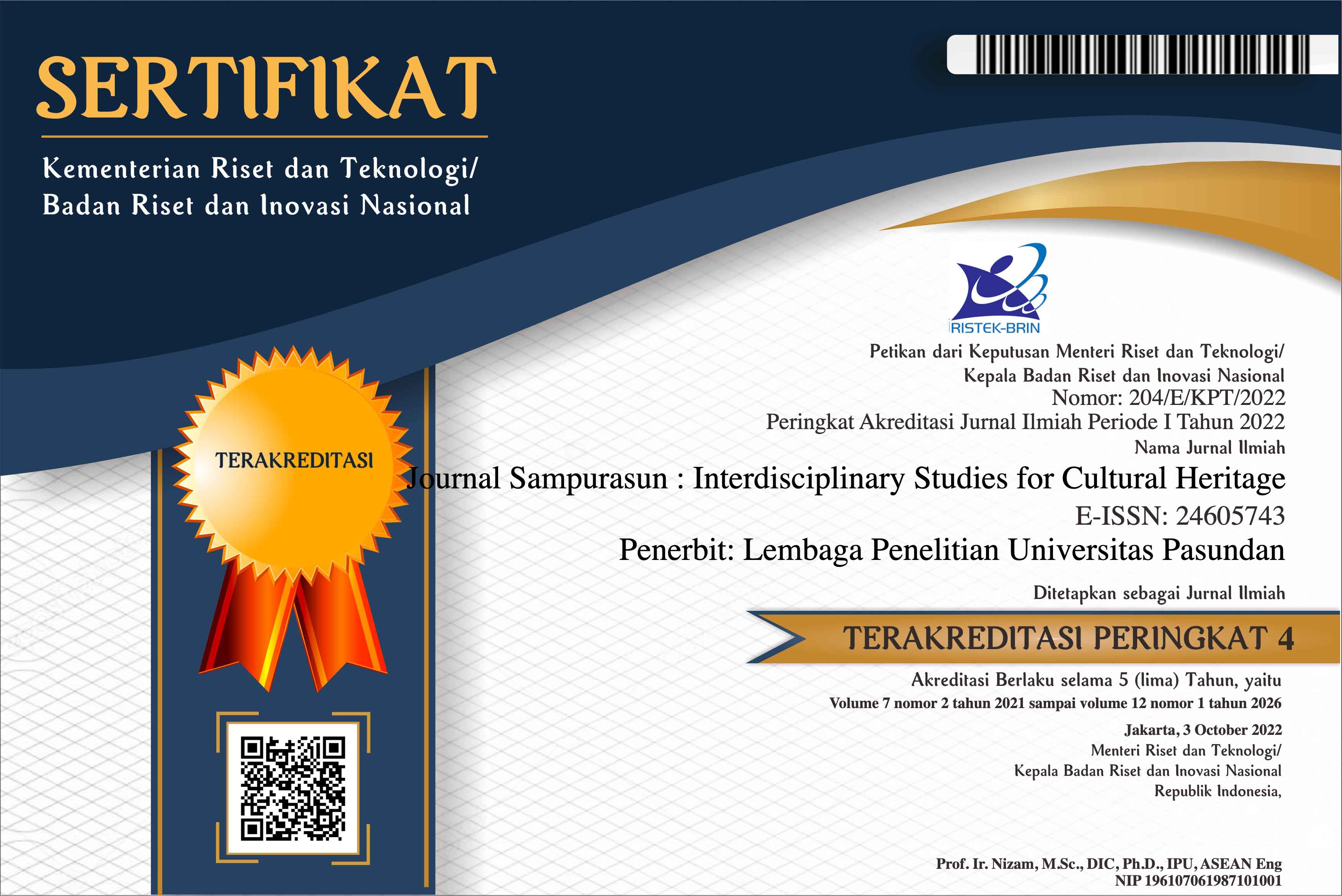EXPLORING HERITAGE: SOCIOLINGUISTICS ANALYSIS ON SLANG WORD IN AFRICAN AMERICAN ENGLISH (AAE) IN TIKTOK’S COMMENTS
DOI:
https://doi.org/10.23969/sampurasun.v10i2.14949Keywords:
sociolinguistics, slang, types and functions of slangAbstract
This study examines language issues that arise in social media. Users of TikTok frequently contribute images, videos, and memes. Users of TikTok also left comments on the post in a variety of languages. Slang is used, and the language style has been studied. The purpose of this study was to understand how slang is put together, what it means, and what its function is. The justification for utilizing slang was revealed in user comments on TikTok. The researcher is interested in talking about the phenomena of African American English slang terms seen in comments on TikTok social media with regard to this issue. Additionally, this study uses a qualitative, descriptive approach. The information was gathered from TikTok users' comment sections over a specific time period. The theory of the functions of slang is from Zhou and Fan (2013), and the framework for the types of slang is based on the theory of Allan & Burridge (2006). The analysis's findings indicate that there are four categories of slang utilized by TikTok users: Clipping, Acronyms, Fresh and Creative, and Flippant. Slang among TikTok users serves purposes related to pursuing self-identity and emotive feelings. The sociolinguistic approach is utilized to better comprehend the slang expressions found in TikTok comments and to address the two issues that have resulted from them.
Downloads
References
Allan, K., & Burridge, K. (2006). Forbidden words: Taboo and the censoring of language. In Forbidden Words: Taboo and the Censoring of Language. United Kingdom: Cambridge University Press.
Bogdan, R. C., & Biklen, S. K. (2007). Qualitative research for education: an introduction to theories and methods. 5th Edition, Allyn & Bacon, Boston
Green L. J. (2002). African American English: A linguistic introduction. Cambridge University Press. https://doi.org/10.1017/CBO9780511800306
Hall, K., & Bucholtz, M. (Eds.). (1995). Gender Articulated: Language and the Socially Constructed Self (1st ed.). Routledge. https://doi.org/10.4324/9780203610664
Heidary, Behnam & Barzan, Pooria. (2019). Language Variation. 10.13140/RG.2.2.36761.36969.
Holmes, J., & Legere, K. (2013). An Introduction to Sociolinguistics. In Language (Vol. 70, Issue 3). London: Longman press Keraf, Gorys.
Juanda, K. U., & Simatupang, E. C. M. (2023). Women’s Language Features in Turning Red (2022): A Sociolinguistics Study. Jurnal Sinestesia, 13(1), 617–626.
Labov, W. (1973). Language in the Inner City: Studies in the Black English Vernacular (p. 405). University of Pennsylvania Press.
Laing, R. E. (2021). Who Said It First?: Linguistic Appropriation of Slang Terms Within the Popular Lexicon (No. 28412751).https://www.proquest.com/docview/2556417327/abstract/6F7B6B35E2BE4B86PQ/1?accountid=12299
Larsen-Freeman, Diane; Cameron, Lynne. Complex systems and applied linguistics. International Journal of Applied Linguistics, 17(2), p. 226-239, 2007.
Nabila, A.F & Hendar (2022). Analysis of Slang Words Used in Movie Script "Lady Bird": Sociolinguistics Study. Budapest International Research and Critics Institute-Journal (BIRCI-Journal) Volume 5, No 3. August 2022, Page: 18467-18473
Putri, N. F., & Fauzia, F. (2017). the Use of Slang Among American Youths As Related To the Rise of Hip Hop Culture: a Sociolinguistics Analysis. UAD TEFL International Conference, 1, 371–381. https://doi.org/10.12928/utic.v1.189.2017
Rahmawati, A. (2012). Word formation processes on slang words used by transsexual. The Strata-1 Degree. Semarang: Faculty Of Humanities Diponegoro University
Rosa, Eliane. (2017). Linguistic variation in English. Revista de Letras. 19. 10.3895/rl.v19n25.4523.
Saputra, N. N. A. A. (2016). The Analysis Of Slangs Used In “Bad Boys” Movie Script. E-Jurnal Humanis, Fakultas Sastra Dan Budaya Unud, 14, 66–72.
Setiono, S. (2015). a Sociolinguistic Study on African American Slang Words Found in 8 Mile Movie.
Sherzer, J., Johnstone, B., & Marcellino, W. (2010). Dell H. Hymes: An intellectual sketch. Language in Society, 39(3), 301–305. https://doi.org/10.1017/s0047404510000229
Simatupang, E. C., & Heryono, H. (2022). New-Word Formation and Social Disruption on Metaverse. English Review/English Review: Journal of English Education, 10(3), 1013–1022.
Wardhaugh, R. (2006). An Introduction to Sociolinguistics Fifth Edition. In An Introduction to Sociolinguistics, Sixth Edition. USA: Blackwell
Wihadi, M. & Pratiwi, P.S (2020). Prevalent Positioned Slang Word Tapestry in “Potatoes Crew” Whatsapp Group. English Journal Literacy UtamaISSN 2654-5284 (print); ISSN 2655-4585 (online) http://journal.widyatama.ac.id/index.php/ejlutama
Yang, Y. (2020). Understanding Young Adults’ TikTok Usage. Communication Research, 2(3), 1–60.
Yule, G. (2006). The Study of Language. Cambridge: Cambridge University Press.
Zhou, Y., & Fan, Y. (2013). A sociolinguistic study of American slang. Theory and Practice in Language Studies, 3(12), 2209–2213. https://doi.org/10.4304/tpls.3.12.2209-2213
Zuraida, I. S. (2021). Investigating Indonesian Slangy Words On Tiktok’s Comments. English Journal Literacy UTama, 5, 347–352.
Downloads
Published
Issue
Section
License
Copyright (c) 2024 Journal Sampurasun : Interdisciplinary Studies for Cultural Heritage

This work is licensed under a Creative Commons Attribution 4.0 International License.
Copyright Notice
Authors should not withdraw their submitted papers because the withdrawal wastes voluntary works devoted by an associate editor and reviewers. But, we accept the withdrawal of a submitted paper if authors have unavoidable reasons. In the event that a manuscript is to be withdrawn from submission to Sampurasun Journal, a letter must be sent to the editorial office requesting withdrawal by e-mail (sampurasunjournal@unpas.ac.id) with its scanned PDF file, before the notification of acceptance for publication.
The withdraw request letter must include the following information. Paper ID, Paper title, Authors names, Reason why the paper must be withdrawn, and Date and signatures of all the authors (or signature of the contact author).
If only the contact author signs the letter, he/she must obtain the agreement of the withdrawal from all the other authors and the letter must include the description that all the other authors agreed the withdrawal. The journal will not withdraw a manuscript from peer review until such a letter has been received. Authors must not assume their manuscript has been withdrawn until they have received appropriate notification from the editorial office. Withdrawal of a manuscript subsequent to acceptance for publication will only be granted in the most exceptional of circumstances.
After the paper is accepted for publication, the withdrawal is not permitted in principle. The authors must always pay the charge even if the withdrawal is permitted. Any request of withdrawal that does not follow the above procedure is treated as invalid. If illegal submission, e.g., plagiarized or duplicate submission, is found for a paper, the withdrawal of the paper will never be permitted and the authors will be punished based on the rule. It is not acceptable practice to withdraw a manuscript in the event of acceptance at another journal. This constitutes dual submission. The editorial office of the other journal will be notified of your actions. In such circumstances Sampurasun ISCH may chose to impose appropriate punitive action subject.
Withdrawal Penalty
Author is not allowed to withdraw submitted manuscripts, because the withdrawal is waste of valuable resources that editors and referees spent a great deal of time processing submitted manuscript, money and works invested by the publisher. If author still requests withdrawal of his/her manuscript when the manuscript is still in the peer-reviewing process, author will be punished with paying $200 per manuscript, as withdrawal penalty to the publisher. However, it is unethical to withdraw a submitted manuscript from one journal if accepted by another journal. The withdrawal of manuscript after the manuscript is accepted for publication, author will be punished by paying US$500 per manuscript. Withdrawal of manuscript is only allowed after withdrawal penalty has been fully paid to the Publisher. If author don't agree to pay the penalty, the author and his/her affiliation will be blacklisted for publication in this journal. Even, his/her previously published articles will be removed from our online system.


















